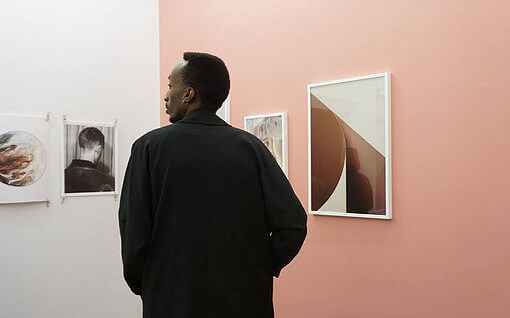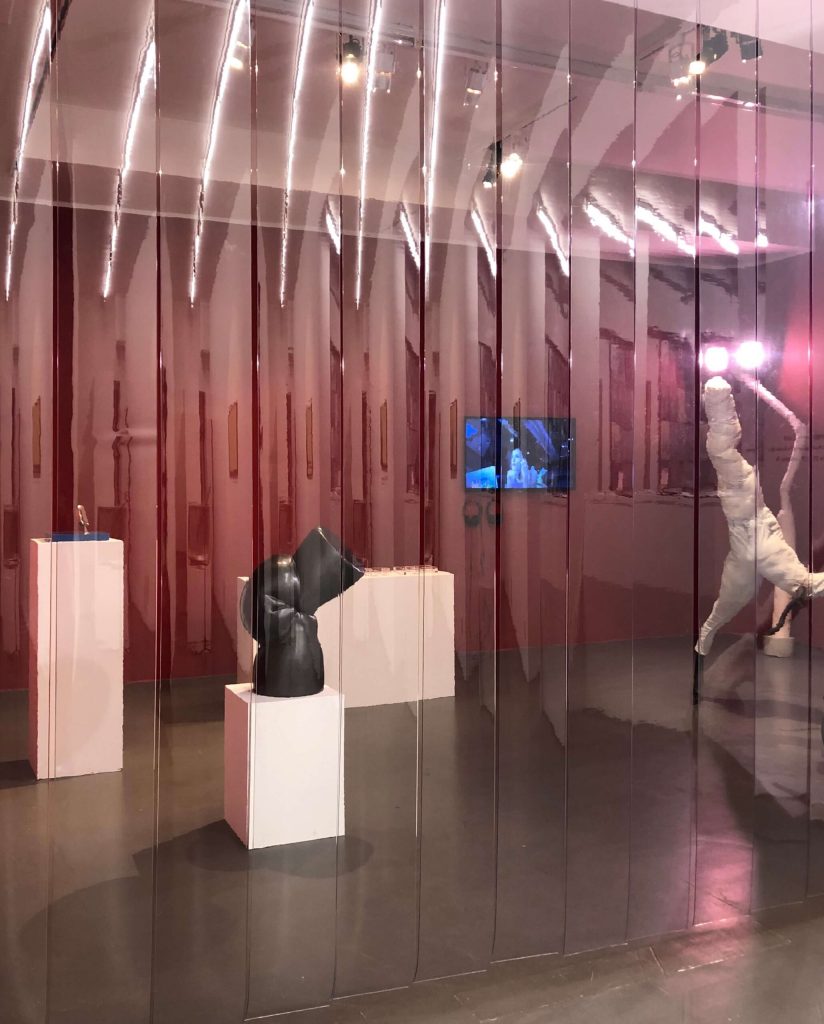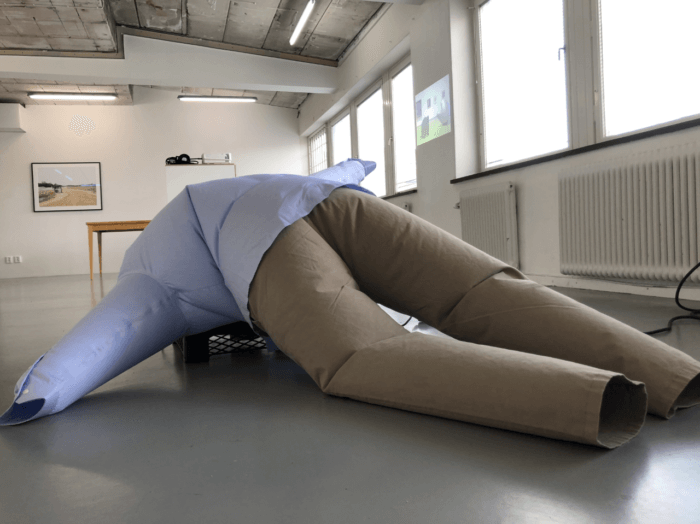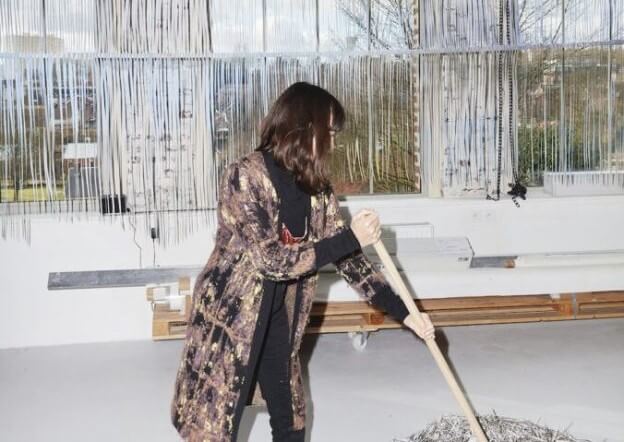A Q&A With C-Print Journal

Ashik and Koshik Zaman are twin brothers based in Stockholm. They founded contemporary art journal C-Print: a non-profit project focused on increasing the visibility of diverse artistic voices, in 2012. Since 2015, the Zaman brothers have also overseen a variety of curatorial projects through C-Print and both continue to work full time in galleries and art institutions alongside their joint venture.

Wetterling Gallery, Stockholm
Curated by C-Print
Let’s start by looking at your backgrounds, which don’t immediately suggest either of you would go on to edit a contemporary art journal. Ashik, you started out in law. Koshik, you were an accountant. How do these professional experiences feed into starting C-Print and moving into the art world?
Ashik: I think as far as coming to art goes, we have come from a family that is interested in the arts – our parents were not super-knowledgable but they had an appreciation that informed us early on. It was part of our household. Of course, they were angling for a certain different direction when it came to choosing a career, but I think your passion always catches up with you. Once I finished studying law, I knew I wanted to move closer to art.
Koshik: I was working as an accountant but many of my clients were artists. So, I was doing relatively non-creative work in the presence of creatives. Once we both moved to Stockholm, it made art more accessible to us. We started going to openings and from there we started to collect.
Ashik: We were both earning money as professionals and decided to spend that money on art so we could get closer to it – intimate in a way that is not accessible to everyone. But you can’t spend all your money on art then live on bread, so we had to find other ways of getting closer.
So C-Print was a way of getting closer. Were there any other motivating factors?
Koshik: We always saw what we were doing then as work, but we always had joint creative projects on the go like scriptwriting and storytelling and writing. We talked about writing a blog or pitching somewhere.
Ashik: Really, though, we wouldn’t have started C-Print if we didn’t see a need for it. We saw how coverage of contemporary art was very review-heavy and the focus in the major publications and dailies was on the big names. The scene informs itself so you need to put word out there. There’s plenty happening in London and New York to report on – but what about Nigeria? I suppose that comes from our sense that Sweden is a very white art scene and there aren’t that many people with our ethnic background in that world, so it’s on our agenda to work for increased diversity and make sure our output is representative.

Easy Come, Easy Go (2019)
Fan-driven kinetic sculpture
From Absolute Affirmation at GELB Ateljéer, Stockholm
Curated by C-Print
It seems like that brotherly bond is quite key to your working dynamic. How would you say that feeds into things? And what would you say each of you brings to the table as individuals?
Koshik: Earlier on, we lived in the same apartment and so we were very accessible to each other. We could sit writing in the living room and then edit together. It’s definitely our baby and our experience feeds into that.
Ashik: I think you’re the voice of reason, for sure. We are usually very much in agreement but we would never throw each other under the bus.
Koshik: Everything we do passes both of us. I’d say I’m more observant while Ashik is very spontaneous. Most things he suggests, I am behind, but we have different ways of expressing it and we just meet halfway.
Ashik: We are a unit, but we have different personalities and that shows when we have discussions about how to approach things. I’m more aggressive, more “seize the moment”, while Koshik is running three lines of thought at once. That helps us identify our individualities and gives us this balancing factor. It’s clear I think that there are two minds at work.
You’ve recently added a couple more minds to that. How has introducing contributors Corina Wahlin and Ella Saar augmented that dynamic?
Koshik: We are definitely pushing that team angle right now and actively enjoying those fresh inputs. We’re still small, and very in sync.
Ashik: You have to renew yourself in certain ways. Now it’s not just the two of us, but we are all always talking to each other on group texts and things like that. It was quite flat before, but now we have structures – weekly meetings and everyone has a monthly feature. It’s organic and nothing is forced.

Exhibition image
Kamarade, Stockholm
Curated by C-Print
You’ve always been Stockholm-based, but C-Print generates international coverage. How do you balance those two aspects, the local and the global, and how has the pandemic affected that?
Koshik: Stockholm is very small compared to the major art scenes internationally, but there are a lot of interesting things happening here. What’s key for us is to bridge what’s happening here and everywhere else. We report on local shows, which we can still do physically at the moment because lockdown was never too heavy in Sweden. The galleries are now doing by-appointment viewings and virtual shows. When we travel, art is always on the agenda – we try to report very actively on where we are and what is happening not just here in Stockholm but in, say, Mumbai or Peru. It’s more rewarding to go see what’s happening in Monaco or Lagos, trying to push ourselves into the unfamiliar.
Ashik: It’s certainly not necessary to know we are based in Stockholm. We never wanted to be a provincial project. We want to be that platform for emerging artists. For instance, we have been diving currently into what’s happening in Nigeria and discussing which angles our team can take on that. It’s very sad being unable to travel right now and I miss the days of going to a foreign city and trying to see as many venues in a day as possible. But our lifestyles have adapted to that for now.
So, how is your process itself different under lockdown – whatever form that has taken – in Sweden?
Koshik: We are still highly active at the moment. We established our team just before the situation and we have really enjoyed doing that work. We have been very quick to pick up on reports and our team works together to select our highlights to put out on C-Print.
Ashik: When this happened, it made us feel that if we were important before then we can only be more important now. We have our daily feed and we use it to interact with artists and help each other. People are spending more time at home, so the work we do on, say, Instagram is more important than ever.
You started curating through C-Print a few years in, but it came out of your online presence. How did you develop that?
Ashik: What we were doing on Instagram, you might have called it ‘curating’ as we figured we could put out artworks together under a title and give it purpose rather than posting a single image. Then people started reaching out with opportunities to curate physical exhibitions. That’s how we came to our first project – ‘Yesterday We Wanted to be the Sky’ at Kamarade in Stockholm. We had noticed a lot of photography based around fleeting moments on Instagram but had yet to see that represented in a physical space so we gathered our contacts from our time at C-Print thus far to help us put it together. It was so rewarding to see it in a physical space.

You’ve got twenty shots and each shot is a word (2019)
Works by Märta Thisner, Frida Vega Salomonsson, Erik Wåhlström and Olle Bengtsson
Area 52 Gallery, Stockholm
How does your curatorial practice relate back to the mission of the journal?
Ashik: It’s hard to stop curating, because you get a taste for it. So we tried to adopt the same principles as our writing. We can’t represent every interest in every show – sometimes we’ll focus on something like feminism in art, and we’ll always try to get artists of colour into the shows – but you can build up a picture from several projects.
C-Print has always been financially independent. What do you think is so valuable about that?
Koshik: As we have that luxury of not having financial interests – everyone here makes money from their full-time work – we can see what needs to be asked and ask it. If we find something important that hasn’t been addressed, we’ll address it. People cheer us on when they couldn’t find it in themselves to speak up.
Ashik: We could probably get money at this point, but from the beginning we always agreed to be independent and never take loans or sponsorship. Nobody is prompting us to do this and put C-Print out there, we do it because we want to and we see a need for it. We like it that way.








